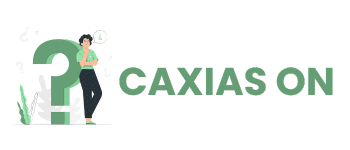Choosing the right mortgage is a crucial decision in the journey of homeownership. Whether you are planning to purchase property in the USA or Canada, understanding the distinct features of each country’s lending practices can greatly affect your financial health. Mortgages can differ significantly between these neighboring nations in terms of terms, rates, and flexibility.
In this article, we will explore and compare the mortgage options available in the USA and Canada, helping you determine which might be more advantageous for your particular situation. By examining the key components of each system, you can confidently navigate your home financing options.
Understanding the mortgage landscape: USA and Canada

When it comes to securing a home loan, both the USA and Canada offer distinctive processes and products. In the United States, the mortgage market is largely driven by private lenders, with loans typically sold to government-sponsored enterprises like Fannie Mae and Freddie Mac.
This operation provides liquidity to the market but also leads to stringent lending criteria. Conversely, in Canada, banks dominate the mortgage scene, with limited intervention from government entities aside from regulatory oversight.
The U.S. offers a wider variety of loan products, from fixed-rate mortgages to adjustable-rate options. Borrowers can often benefit from choosing a mortgage with a longer term, such as 30 years, which can lower monthly payments.
However, these loans usually come with a higher interest rate compared to shorter terms. In Canada, while fixed-rate and variable-rate mortgages are available, they generally have shorter terms, commonly set at five years, even if the amortization period can extend to 25 years.
Interest rates and terms
Interest rates are a critical consideration when selecting a home loan, as they dictate the total cost of the borrowing. In the U.S., fixed-rate mortgages are common, providing borrowers with stable payments over extended periods, such as 15 to 30 years.
Adjustable-rate mortgages are also available, with initially low rates that can increase over time. These products cater to different risk appetites and availability can vary depending on current economic conditions. Canada, on the other hand, usually offers shorter fixed-term loans, such as five years, even though the overall amortization can be longer.
With interest rates set for these shorter timeframes, Canadians face renewal or refinancing every few years, which can expose them to market fluctuations. This system can be beneficial when rates are declining, yet potentially costly during hikes.
Regulations and requirements
Mortgage regulations differ extensively between the USA and Canada, especially concerning the requirements for qualification and government support. In the United States, lending is supported by entities like FHA, VA, and USDA, providing various insurances and guarantees that allow lenders to offer loans with lower down payments and relaxed credit conditions.
This flexibility widens access to homeownership but requires borrowers to navigate complex qualification criteria. Canada’s mortgage industry is defined by more conservative lending practices. Canadian borrowers must undergo rigorous stress testing by federal regulations to ensure financial resilience in case of interest rate spikes.
Additionally, Canadians are often required to make higher down payments, particularly for properties exceeding certain value thresholds. Insurance through Canada Mortgage and Housing Corporation (CMHC) is necessary for smaller down payments.
Making the right choice for your needs
Deciding between the U.S. and Canadian mortgage systems involves more than comparing interest rates and terms. It demands a thoughtful evaluation of your long-term financial goals, income stability, and risk tolerance. Understanding these loans’ dynamics could significantly impact your homeownership costs and financial well-being.
Prospective buyers should consider consulting with financial advisors or mortgage brokers familiar with both markets who can provide tailored advice based on individual circumstances. These professionals can help assess your needs, analyze your financial profile, and recommend suitable mortgage options. They can also guide you through the intricacies of loan agreements and regulatory obligations, ensuring informed decision-making.
Assessing personal financial goals
Determining which mortgage option aligns with your personal financial objectives is crucial in the decision-making process. Start by assessing your financial plans, whether they’re centered around stability with fixed payments or seeking opportunities to leverage flexible terms for potential savings. Consider your lifestyle plans, such as future relocations, which may affect your loan preferences.
For those prioritizing predictable budgeting and long-term plans, the stability offered by U.S. fixed-rate mortgages can be appealing. On the other hand, if you anticipate advancements in your earning capacity or trends in falling interest rates, the Canadian short-term renewal system might offer advantages.
Evaluating risk tolerance
Another essential factor when choosing between mortgage options is your comfort level with financial risk. The U.S. market offers fixed-rate mortgages that deliver certainty in terms of payment schedules over the long term, which can be attractive for risk-averse borrowers who value consistency.
Conversely, Canadian consumers who are comfortable with periodic rate renegotiations might find the flexibility of Canadian mortgage terms more appealing. This option may provide opportunities to capitalize on interest rate declines and the ability to pay off loans faster without penalties, catering to those with a higher risk appetite.
By carefully considering your risk tolerance and the potential impacts of rate changes on your financial situation, you can choose a mortgage option that complements your comfort with financial uncertainty, securing a stable and advantageous home loan experience.
